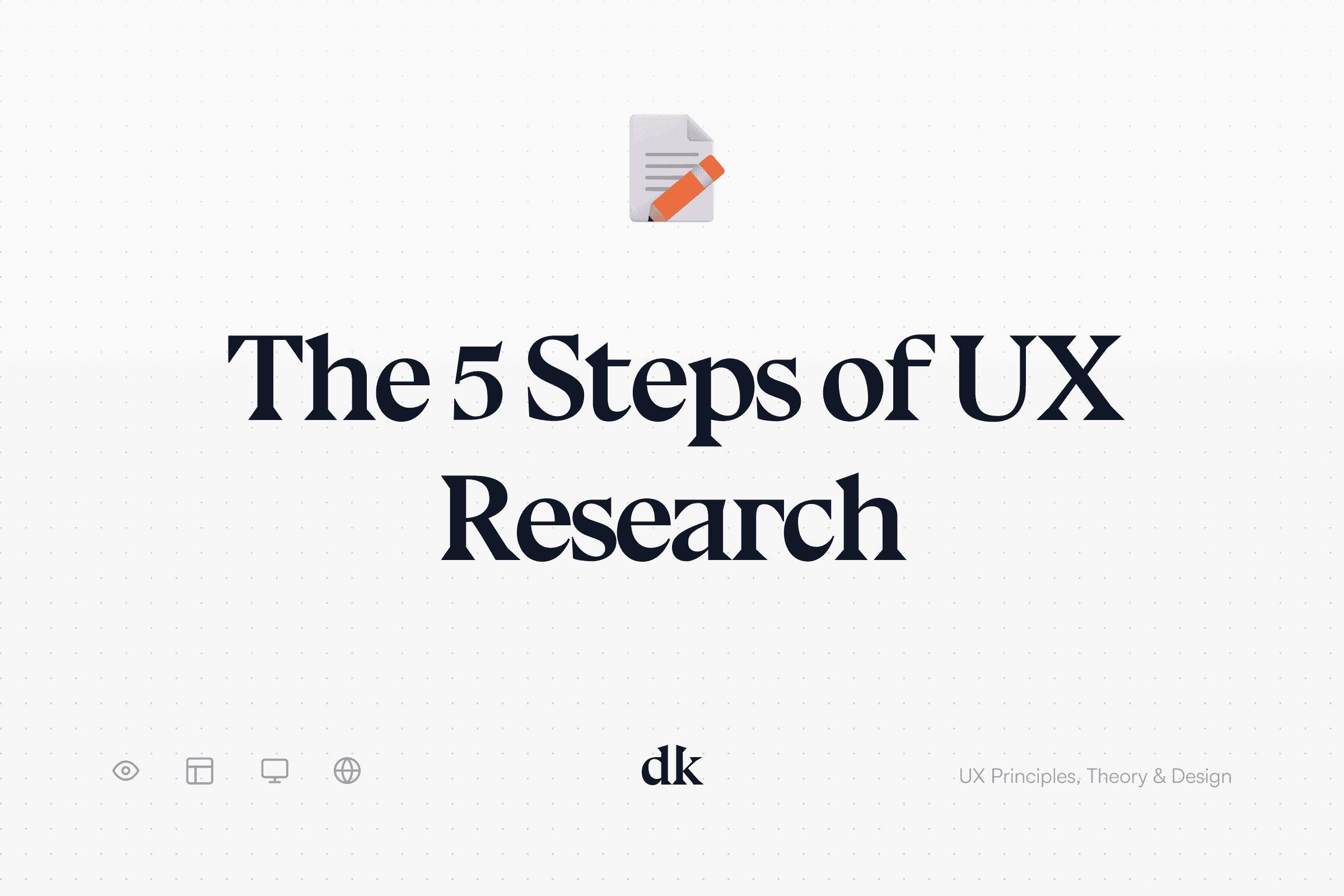The Five Essential Steps of UX Research: A Guide for Building User-Centric Experiences
User Experience (UX) research is a fundamental part of creating digital products that truly resonate with users. Without understanding the needs, behaviours, and goals of real people, even the most visually appealing design may fall short of expectations. UX research helps designers and product teams uncover insights, test hypotheses, and ultimately make informed decisions to improve user satisfaction and engagement. Whether you’re developing a new app, website, or product feature, following a structured UX research process is key.
This guide explores the five essential steps of UX research — Objectives, Hypotheses, Methods, Conduct, and Synthesise — and provides insights on how to implement each stage.
1. Defining Objectives
The first step in any UX research process is to establish clear, focused objectives. Objectives lay the groundwork by defining what you want to learn and what challenges you need to solve. This step ensures that the research effort is both purposeful and aligned with broader business or product goals.
How to Define Clear UX Research Objectives
- Start with the big picture: Identify high-level product goals and think about how UX research can support them. Are you aiming to improve a specific feature or understand the motivations behind user actions?
- Ask key questions: Common questions may include “What are the pain points users experience?” or “What motivates users to engage with the product?”
- Focus on user-centred goals: It’s essential to prioritise objectives that help you understand users’ needs, rather than objectives that are solely about business outcomes.
For example, a well-defined objective could be: “To understand the challenges first-time users face when navigating the onboarding process.” This objective is user-focused and gives direction for the following research steps.
2. Formulating Hypotheses
Once you have your objectives, the next step is to develop hypotheses. A hypothesis is a proposed explanation for a specific behaviour or problem that you’ll test through your research. Formulating hypotheses is important because it provides a foundation for targeted research and helps clarify assumptions.
How to Develop UX Hypotheses
- Use “if… then…” statements: For example, “If the onboarding process is simplified, then new users will complete registration quicker.”
- Base hypotheses on prior insights: Consider any existing data, past user feedback, or team observations. For instance, if data suggests that many users drop off during registration, your hypothesis could address the reasons behind this.
- Ensure hypotheses are testable: Good hypotheses should be specific and measurable. Avoid vague statements, like “Users will find the app confusing,” as they’re hard to quantify or directly address.
Formulating hypotheses helps identify areas where research can either validate or challenge existing assumptions, guiding the UX team toward actionable insights.
3. Choosing Methods
With objectives and hypotheses in place, the next step is to determine which UX research methods are best suited to gather relevant information. Different methods yield different insights, so choosing the right approach is crucial.
Common UX Research Methods
- Interviews: One-on-one interviews provide in-depth insights into user needs, motivations, and experiences. They’re particularly useful for exploring complex, qualitative data.
- Surveys and questionnaires: These are useful for gathering data from a larger user sample and are often effective for understanding user demographics or quantitative feedback on features.
- Usability testing: Observing users as they interact with a product can reveal specific pain points in the user journey and help identify areas for improvement.
- A/B Testing: When you have two versions of a design or feature, A/B testing can help you understand which performs better in real-world scenarios.
Choosing the Right Method(s)
The ideal method often depends on the research objective. For example, if you need to validate how users interact with a specific feature, usability testing may be appropriate. Alternatively, if you’re seeking general feedback on user satisfaction, surveys or interviews might be more suitable. Often, a combination of methods yields the most comprehensive insights.
4. Conducting the Research
With the methods chosen, it’s time to conduct the research. This phase is where insights begin to take shape as you engage directly with users. The way you conduct UX research can significantly impact the quality of data you gather, so it’s important to be organised and mindful of user experience during this step.
Best Practices for Conducting UX Research
- Recruit participants carefully: The quality of your research depends on having participants who represent your target user base. Use recruiting tools or agencies if needed to find suitable candidates.
- Create a comfortable environment: Whether research is remote or in-person, ensure that users feel comfortable and relaxed. An anxious participant may not provide reliable data.
- Follow structured but flexible processes: Prepare questions and scenarios beforehand, but be ready to adapt if a user’s responses reveal unexpected insights.
- Take thorough notes: Detailed note-taking helps capture specific behaviours, feedback, and reactions that may not be fully captured by audio or video recordings alone.
Effective research conduct requires balancing structure and adaptability. Often, the most valuable insights arise from allowing users to interact naturally with the product while gently guiding them through the tasks or questions.
5. Synthesising Findings
The final stage of the UX research process is to synthesise the findings. This step involves organising and analysing the data collected to extract actionable insights that can inform design decisions.
How to Synthesise UX Research Data
- Organise data: Start by grouping similar responses, behaviours, or issues. Use affinity diagrams, spreadsheets, or qualitative analysis software to organise the data effectively.
- Look for patterns: Identify recurring themes or trends in user responses. For example, if several participants mention frustration with a specific step in a process, it’s likely an area that needs redesign.
- Distill key insights: Translate patterns into clear, actionable insights. For instance, if users consistently struggle with an onboarding step, an insight might be, “Onboarding instructions need to be clearer and more concise.”
- Prioritise issues based on impact: Not all insights will have the same significance. Work with stakeholders to prioritise high-impact findings that align with business objectives or user experience improvements.
Synthesising is arguably the most critical phase, as it turns raw data into strategic guidance that can enhance the user experience. At this stage, you’ll produce a report or presentation for stakeholders to summarise key findings, supporting data, and actionable recommendations.
Final Thoughts: Leveraging UX Research for Better Product Decisions
Each of the five steps in UX research serves a specific purpose, from setting clear objectives to delivering actionable insights. By following this structured process, UX researchers can help teams make informed decisions that enhance user satisfaction and business value. Moreover, this approach fosters a user-centred mindset within organisations, promoting ongoing improvement and innovation in digital products.
For teams operating in fast-paced environments, it’s tempting to skip steps or rush through research. However, the investment in thorough UX research is invaluable, providing a solid foundation for building products that not only meet user needs but also create meaningful, enjoyable experiences. Whether you’re a seasoned UX designer or new to the field, embracing these five steps will help you bring the voice of the user into every product decision.




